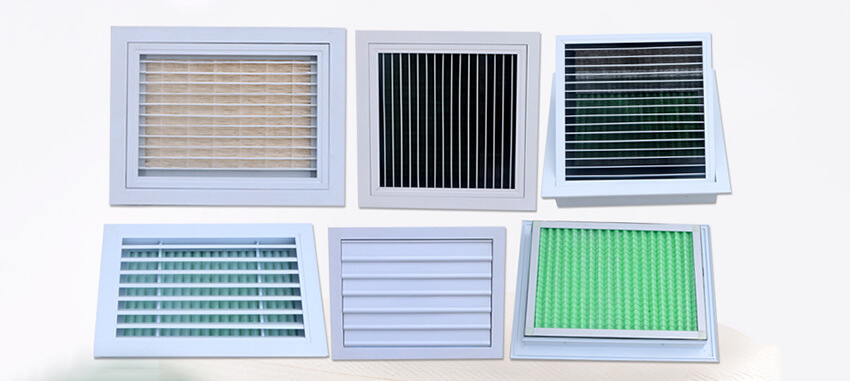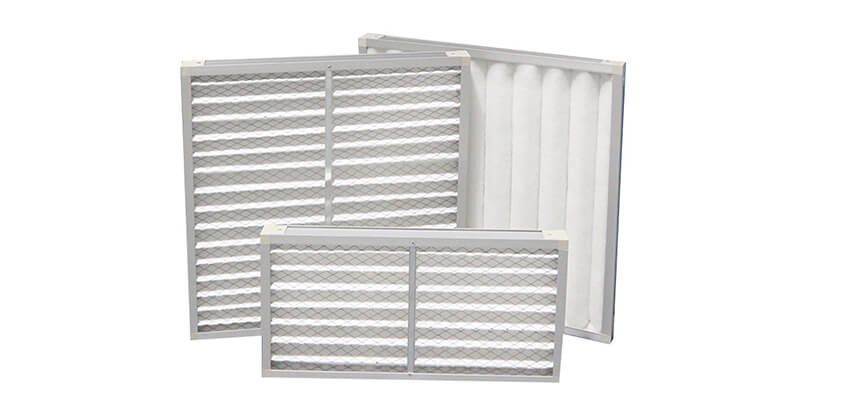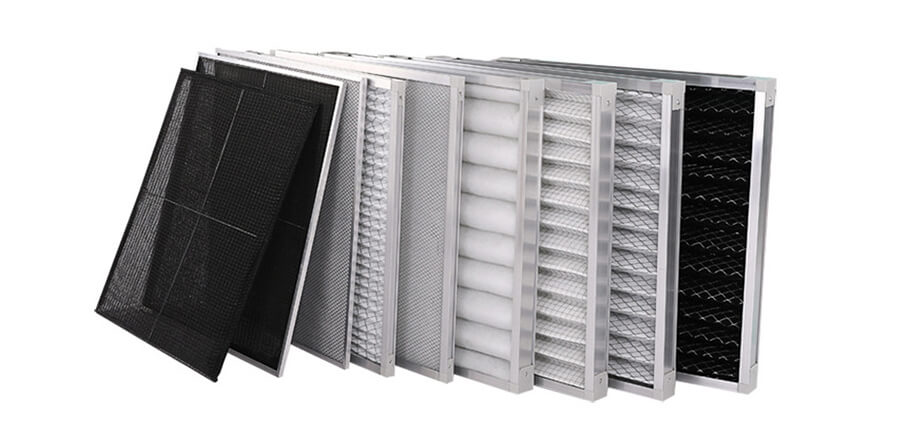In the heart of every home’s HVAC (Heating, Ventilation, and Air Conditioning) system lies a crucial component often overlooked: the air filter. This segment demystifies air filters, outlining their types, functions, and the vital role they play in maintaining indoor air quality.
What Are HVAC Air Filters and How Do They Work?
Air filters are engineered barriers that trap and remove particles from the air circulating through your HVAC system. This includes dust, pollen, mold spores, and other airborne contaminants. The primary goal? To protect the HVAC system from getting clogged with debris and to enhance the indoor air quality of your home.
Types of Air Filters
Diving into the world of air filters, we encounter a variety of types, each designed with specific needs and performance capabilities in mind. Here’s a brief overview:
- Fiberglass Filters: These are the most basic and cost-effective option. They offer minimal protection and are best suited for individuals without severe allergies or respiratory issues.
- Pleated Filters: A step up, pleated filters have more surface area to capture particles, making them better for homes needing moderate filtration.
- HEPA Filters: Standing for High-Efficiency Particulate Air, HEPA filters offer the highest level of filtration, capable of trapping particles as small as 0.3 microns. They are ideal for those with allergies, asthma, or other respiratory conditions.
- Electrostatic Filters: These use an electric charge to attract and hold onto dust and other particles. They can be disposable or washable and are great for capturing small particles.
Let’s take a look at a video for reference:
MERV Ratings: Understanding the Numbers
Key to selecting the right air filter is understanding MERV ratings (Minimum Efficiency Reporting Value). MERV ratings scale from 1 to 20 and indicate the filter’s ability to capture larger particles (between 0.3 and 10 microns). The higher the MERV rating, the better the filter is at trapping specific types of particles. Residential homes typically find filters in the MERV 6 to 13 range sufficient, balancing effectiveness with the system’s airflow.
Assessing Your Needs
When it comes to choosing the right air filter for your home, a one-size-fits-all approach doesn’t cut it. Your living situation, health concerns, and even your location play pivotal roles in determining the most suitable air filter. This section guides you through the key considerations to assess your specific needs effectively.
Health and Allergies
For households with members suffering from allergies, asthma, or other respiratory conditions, air quality isn’t just about comfort; it’s a health necessity. In such cases, opting for HEPA filters or high-MERV-rated pleated filters can make a significant difference. These filters excel at trapping fine particles like pollen, pet dander, and dust mites, reducing the triggers for allergic reactions and asthma attacks.
Pets in the Home
Pets bring joy, companionship, and, unfortunately, additional air quality challenges. Pet dander, fur, and outside dirt can significantly impact your indoor air quality. If you have furry friends at home, consider electrostatic or pleated filters with a higher MERV rating. These filters are more adept at capturing pet dander and maintaining a cleaner living environment.
Size of Your Living Space
The size of your living space can influence the type of air filter you need. Larger homes may require filters with a higher capacity or more frequent changes to maintain optimal air quality across all areas. Conversely, smaller spaces might not need as robust a filtration system, but ensuring adequate airflow and filtration efficiency remains crucial.
Local Air Quality and Environmental Factors
Your local environment can heavily influence indoor air quality. Homes in urban areas or near industrial sites may be exposed to higher levels of pollution, necessitating filters with higher MERV ratings. Conversely, if you live in a rural area, your primary concern might be pollen or dust, requiring a different filtration focus.

Comparing Air Filter Types
Selecting the right air filter for your HVAC system involves weighing the benefits and drawbacks of each filter type. This comparison aims to shed light on the various options available, helping you make an informed decision tailored to your needs.
Fiberglass Filters
Fiberglass filters are the most basic and economical choice. They consist of a simple fiberglass mesh that traps large particles like lint and dust. While these filters are low-cost and disposable, their low MERV rating (between 1 and 4) means they do little to improve air quality or protect against smaller allergens.
Pleated Filters
Pleated filters offer a significant step up in both performance and price. Made from cotton or synthetic fabrics, these filters have a larger surface area to capture smaller particles, including mold spores and pet dander. With MERV ratings ranging from 5 to 13, pleated filters strike a good balance between efficiency and airflow, making them a popular choice for residential homes.
HEPA Filters
High-efficiency particulate Air (HEPA) filters represent the gold standard in air filtration, capable of trapping 99.97% of particles that are 0.3 microns in diameter. Their high MERV rating (17 to 20) makes them ideal for individuals with severe allergies or respiratory issues. However, it’s essential to ensure your HVAC system can accommodate the reduced airflow that comes with such dense filtration.
Electrostatic Filters
Electrostatic filters utilize an electric charge to attract and hold onto dust and other particles. Available in both disposable and washable forms, these filters can vary in efficiency. Washable models, in particular, offer the advantage of reusability and a moderate MERV rating (4 to 8), making them a cost-effective solution for trapping smaller particles.
MERV Ratings Explained
The Minimum Efficiency Reporting Value (MERV) rating system is a critical component in understanding air filter efficiency. MERV ratings range from 1 to 20, indicating the filter’s ability to capture particles of varying sizes.
Understanding the Scale
- MERV 1-4: Offers minimal filtration, capturing large particles such as dust and lint.
- MERV 5-8: Suitable for residential settings, these filters capture mold spores, dust mite debris, and pet dander.
- MERV 9-12: Ideal for those with allergies, these higher-rated filters trap smaller particles, including auto emissions and legionella.
- MERV 13-16: Provides superior air quality, capturing bacteria, tobacco smoke, and sneeze droplets.
- MERV 17-20: Used in specialized environments like hospitals, these filters trap viruses and microscopic allergens.
Choosing the Right MERV Rating
The optimal MERV rating for your home depends on your specific needs. While higher-rated filters offer better protection against pollutants, they also require more energy to push air through, potentially straining your HVAC system. It’s crucial to find a balance that enhances indoor air quality without compromising system efficiency.

Cost Considerations
When it comes to choosing air filters for your home, the price tag is an unavoidable factor. However, it’s important to look beyond the initial cost and consider the long-term value and potential savings associated with each option. This section breaks down the cost considerations you need to weigh.
Initial Investment vs. Long-Term Savings
Fiberglass filters may seem like the most budget-friendly option at first glance, with their low initial cost. However, their inefficiency in trapping smaller particles could lead to higher healthcare costs due to poorer air quality. On the other hand, pleated and electrostatic filters, while more expensive upfront, last longer and offer better air quality, potentially saving you money on healthcare and HVAC maintenance in the long run.
HEPA filters represent the highest initial investment but are unmatched in their ability to purify indoor air. This makes them particularly cost-effective for families with severe allergies or respiratory issues, as they can significantly reduce medical bills related to air quality concerns.
Maintenance and Replacement Costs
The frequency of filter replacement also plays a crucial role in overall cost. Disposable filters might seem economical, but the costs can add up over time. Washable electrostatic filters, despite their higher upfront cost, can be cleaned and reused, offering savings over several years. Remember, neglecting to replace or clean air filters can lead to increased energy bills and expensive HVAC repairs.
Making the Right Choice
Choosing the best air filter for your home involves balancing your family’s health needs, your HVAC system’s requirements, and your budget. This final section provides a concise guide to making an informed decision.
Assess Your Home’s Needs
Start by evaluating your household’s specific needs. Consider allergies, pets, and the general air quality in your area. This assessment will help you narrow down the type of filter that’s best suited to your home.
Understand Your HVAC System
Not all HVAC systems are designed to handle high-efficiency filters like HEPA. Consult with an HVAC professional to understand what your system can support without compromising its efficiency or risking damage.
Consider Long-Term Costs and Benefits
Weigh the initial cost against potential savings on energy bills, healthcare, and HVAC maintenance. Sometimes, investing in a higher-quality filter can be more economical over time.
Make an Informed Decision
Armed with knowledge about filter types, MERV ratings, and cost considerations, you’re now equipped to make a choice that balances air quality improvement with economic feasibility. Remember, the best air filter is one that meets your specific needs, supports your health, and fits your budget.

Conclusion
Choosing the right air filter for your home is more than a routine maintenance task; it’s a critical decision that affects your indoor air quality, health, and comfort. Throughout this guide, we’ve explored the types of air filters, MERV ratings, cost considerations, and how to assess your specific needs. The key takeaway is that the best air filter for your home is one that aligns with your lifestyle, health requirements, and budget, ensuring that your living environment is not just breathable but conducive to well-being.
FAQs Section
How often should I change my air filter?
The frequency of change depends on the type of filter, household needs, and environmental factors. Generally, fiberglass filters should be changed every 30 days, pleated filters every 3-6 months, and electrostatic filters according to the manufacturer’s recommendations. If you have pets, allergies, or live in a high-pollen area, you may need to change your filter more frequently.
Can a high-MERV filter strain my HVAC system?
Yes, filters with a very high MERV rating can restrict airflow, potentially straining the HVAC system. It’s crucial to choose a filter that provides a balance between air quality and airflow. Consult with an HVAC professional to determine the highest MERV rating your system can handle efficiently.
Are washable air filters a good investment?
Washable air filters can be cost-effective and environmentally friendly. They tend to have a lower MERV rating, so they’re not suitable for those with severe allergies or respiratory issues. However, for general use, they can provide adequate filtration and save money over time.
Do I need a HEPA filter for my home?
HEPA filters are recommended for households with members suffering from severe allergies, asthma, or other respiratory conditions due to their ability to capture very fine particles. However, not all HVAC systems are compatible with HEPA filters, so it’s essential to verify compatibility before making a switch.
If you want to know more, please click below:
- Grilles, Registers & Diffusers – The Ultimate Guide
- HVAC Linear Slot Diffusers – The Ultimate Guide
- HVAC Egg Crate Diffuser – The Ultimate Guide
- HVAC Jet Nozzle Diffuser – The Ultimate Guide
- HVAC Linear Bar Grilles – The Ultimate Guide
- HVAC Air Swirl Diffusers – The Ultimate Guide
- HVAC Round Ceiling Diffusers – The Ultimate Guide
- Round Ceiling Diffusers – The Ultimate Guide
- Exhaust Air Louver – The Ultimate Guide
- HVAC Registers – The Ultimate Guide


